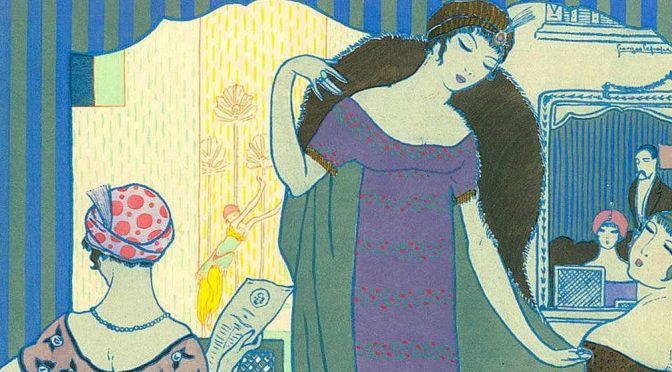Fashion models in the great age of illustration, beginning in the Art Nouveau period through Art Deco and even through the Golden Age of Hollywood, were often depicted with only four fingers. More accurately, their two middle fingers were joined to appear as one. How did such a convention start and why would it persist in fashion and costume illustration? My review of several likely originators of the practice led to some interesting results. Firstly, the illustration of hands and fingers is quite difficult, so only the best trained artist would make a point of clearly defining hands and fingers in order to distinguish joined fingers. It is much easier to hide hands behind fabric. It is likely that one fashion artist started the trend, which was picked up in succession by many others. The fashion and costume illustrators/designers that are suspects follow below.
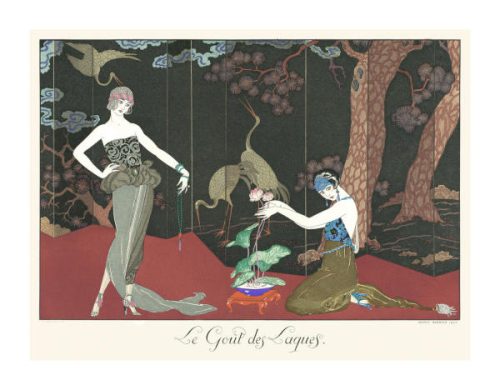
GEORGES BARBIER – Barbier was born in Nantes France in 1882. He attended the Ecole des Beaux-Arts in Paris, studying the art of the masters at the Louvre in his spare time, including Persian miniatures, Greek pottery art, and the then popular Japanese woodblock prints. As with almost all artists in the early 1910s, he was influenced by the Ballet Russe and the costume designs of Leon Bakst. Barbier illustrated fashions for Paul Poiret, contributed to the influential fashion magazine La Gazette du Bon Ton as well as Vogue, and designed costumes for ballerina Anna Pavlova.
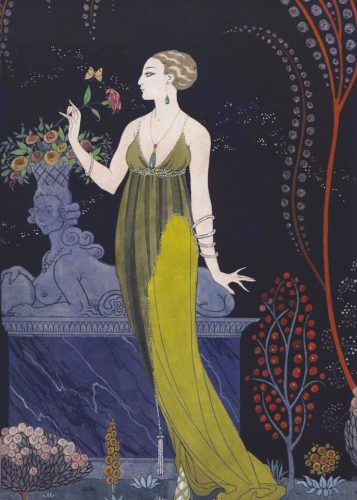
GEORGES LEPAPE – Lepape was born in Paris in 1887, where he too later attended the Ecole des Beaux-Arts at age 18. In 1910 he began working as an illustrator for the fashions of Paul Poiret, the leading Art Nouveau designer of the time. He held an exhibition of his art at the After his major show at the Musée des Arts Décoratifs in Paris in 1920. His fashion illustrations were frequently on the covers of Vogue and Vanity Fair in the 1920s. He too used the “four-fingered” model. Lepape and Barbier were friends and were in the same social circle.
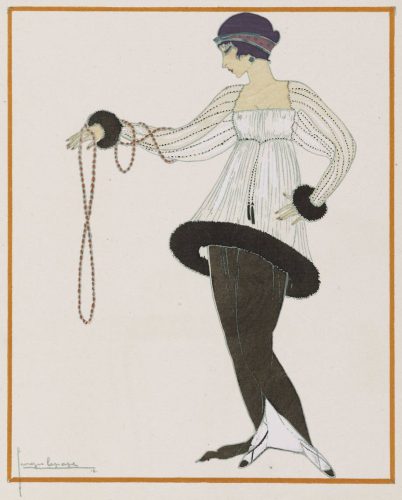
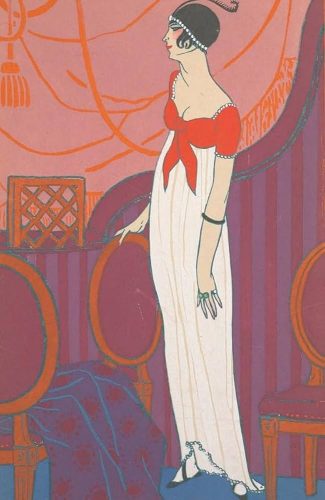
PAUL IRIBE – Iribe was born Paul Iribarnegaray in 1883 in Angoulême France. He too attended The Ecole des Beaux-Arts in Paris starting in 1908. He was talented enough to be hired by fashion designer Paul Poiret to illustrate a book of Poiret’s fashion plates. Iribe came to Hollywood in 1919 when Cecil B. DeMille hired him to design costumes for Gloria Swanson in Male and Female.* Iribe also worked as the Art Director for several DeMille films including for the 1923 The Ten Commandments, but eventually DeMille had arguments with Iribe and let him go. Iribe and Coco Chanel became lovers in the early 1930s, until his death in 1935. Paul Iribe seldom showed hands in detail in his illustrations. When he did, they would sometimes be shown in the four-fingered style.
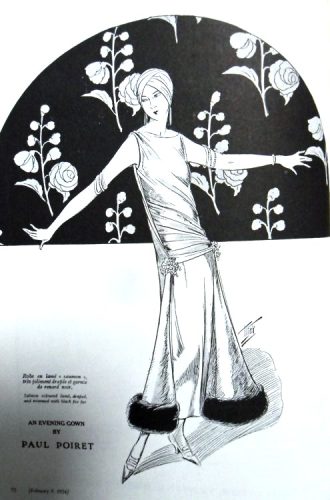
EDUARDO GARCIA BENITO – Benito was born in 1891 in Valladolid, Spain. He was studied at the Mignon studio and with Daniel Vierge, then moved to Paris in 1912 where he studied at the École des Beaux-Arts. His art focused on portrait painting, but for 15 years he also illustrated covers for Vogue magazine. He is noted for his Art Deco covers from the 1920s and 30s. Benito would also usually use four fingers on his models.
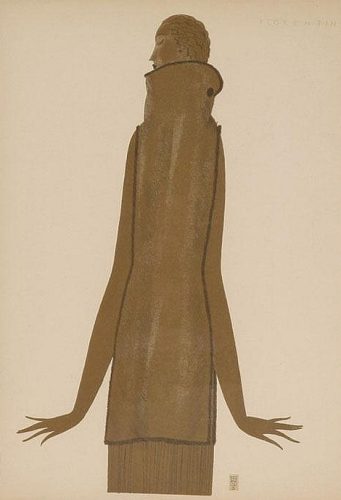
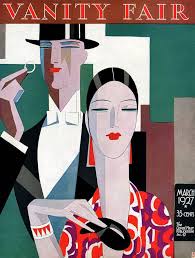
HELEN DRYDEN – Dryden was born in 1882 in Baltimore Maryland and mostly self-trained in art. She was known as the “Witch of Color” and even America’s “First Lady” of Design. She was no relation to Ernst Dryden, the artist and costume designer. Helen Dryden focused on fashion design and illustration, illustrating very creative covers for Vogue, and Delineator in the Art Deco style. She later transitioned into industrial design.** Dryden did not illustrate her models with four fingers.
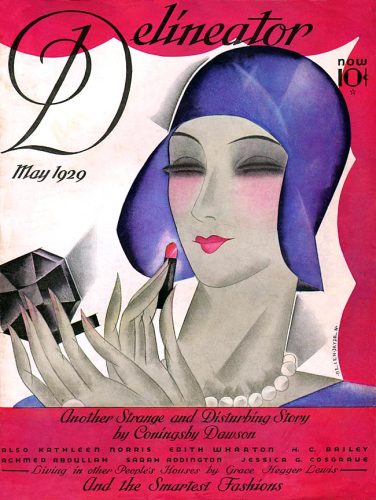
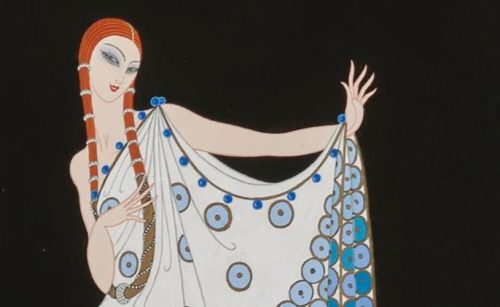
GORDON CONAY – Conway was born in 1894 in Cleburne, Texas. She did not receive a professional art education but rather attended the National Cathedral School in Washington D.C. and at a finishing girls’s school in Lausanne Switzerland and then Rome. She went to London in 1915 and was commissioned to create fashion illustrations for Vogue and Vanity Fair. She also began illustrating products for ads and posters. In the 1920s she began designing costumes for English films, becoming chief costume designer for Gaumont-British Studios in 1933, and by 1935 had designed for 35 films. Conway irregularly used four fingered models.

Several Hollywood costume designers adopted the practice of illustrating their costume sketches with four-fingered models. Below are a few examples.
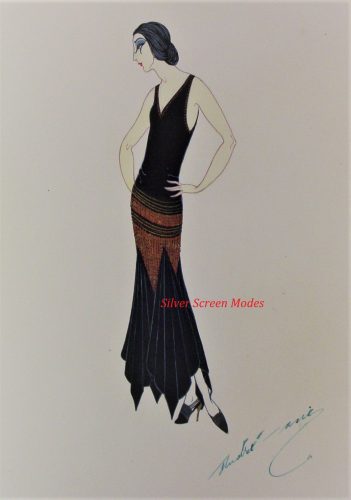
Costume designer Andre-ani used a four-fingered illustration in his design for Norma Shearer in His Secretary (M-G-M), 1925.
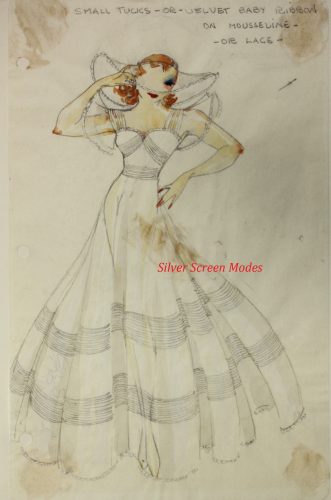
Costume designer Howard Greer’s design for Ginger Rogers in Carefree (RKO, 1938), showed a four-fingered style. This costume design was modified for the film.
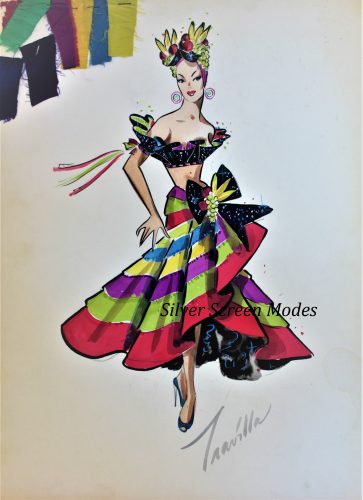
William “Bill” Travilla was best known for designing Marilyn Monroe’s most glamorous costumes. The costume design above shows much flair, as does most of his costume illustrations, but is for an unknown production. he too used a four-fingered model.
The use of this style of illustration, into fairly modern times, is a curiosity. It can only have happened by diffusion, considering the proximity and intertwined circle of fashion illustrators of the early 1900s. The leap from Europe to the costume designers in Hollywood is easily explained considering their regular consumption of fashion magazines like Harper’s Bazaar and Vogue.
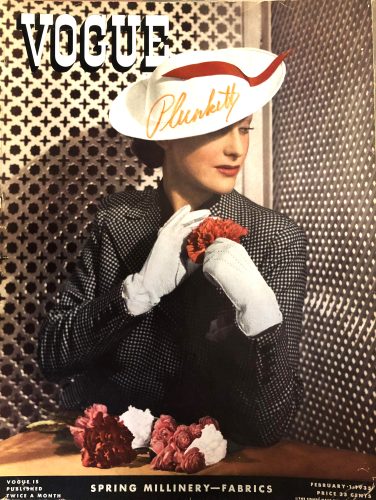
Although not definitive, my assumption would be that GEORGES BARBIER was the first illustrator to use the four fingered model, having been the oldest of the group working in Paris.
* Mitchel Leisen designed costumes in the Babylonian scenes and Clare West also designed costumes for the film.
** Helen Dryden was at one time the highest-paid woman artist in the United States, but lived in poverty and obscurity at the end of her life.
Views: 10

